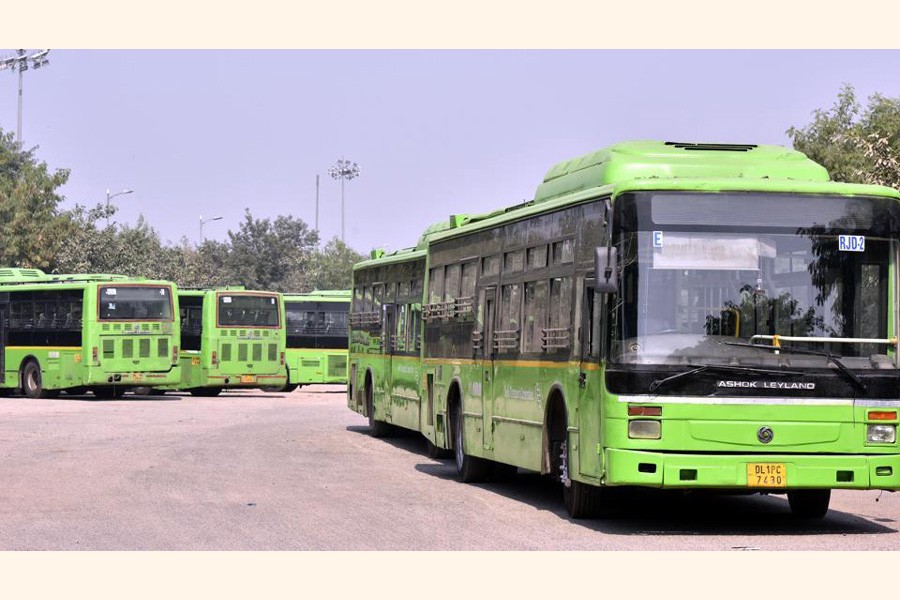The world before Covid-19 looks very attractive right now. In light of the disease, mass unemployment and social distancing, a return to pre-pandemic normality seems appealing. Yet we should remember what normal was.
Normal was obtaining 85.0 per cent of our energy from fossil fuels and losing seven million people a year to air pollution. Normal was careening toward a global temperature rise of over 3.50C by the end of the century, with island nations facing obliteration. Normal was one in eight species threatened with extinction, continued squeezing of wild spaces into smaller and smaller corners, and the rampant illegal trade in wildlife. Normal contributed to causing this pandemic.
We should also remember that Covid-19's effects on health, jobs and economies are simply an acute version of what climate change is predicted to bring - and in places already has. Unless we aspire to a better normal with recovery, we are treating the symptom, not the disease. We must build back better than before.
Many governments are preparing stimulus and relief packages to support Covid-19 recovery. Trillions of dollars will be ushered into the economy across Asia and the Pacific. These stimulus measures should help us achieve a better normal - a greener, more equitable normal. How? A recent survey of 230 economists in 53 countries suggests that green, climate-friendly stimulus measures are the best options for an economic rebound, offering the highest economic multipliers in the short- and long-terms.
Even before the pandemic, the UN determined that climate action could trigger US$26 trillion in economic benefits by 2030, create more than 65 million new jobs and avoid 700,000 premature deaths from air pollution. Governments have no shortage of options when it comes to directing a green, equitable stimulus package. They can offer support to the construction industry to develop energy efficient and zero-energy buildings. This is a high employment sector, and investments can be quickly implemented.
It may be tempting to scale up funds for infrastructure like roads, but that funding can go to improved and greener public transport systems to service more people. More public transit capacity will reduce the load on roads and reduce air pollution and emissions. The lockdown has shown it's possible to lean more heavily on IT to decentralise business operations, reducing time lost and carbon produced in commutes and travel. Governments should now consider incentives to companies that invest in IT solutions for their operations.
Many industries will be looking for bailouts to bounce back. There is no time like the present for governments to include terms that will require companies to work toward climate neutrality. Airlines supported by governments should be asked to make stronger commitments and take bolder action to reduce emissions, which will be needed anyway for the industry to guarantee long-term sustainability and employment for the millions who rely on it. The example is being set by those governments who have made their support dependent on energy efficiency targets and shifting short haul flights to rail.
Bailouts to the auto industry can be directed to investments in e-vehicle and battery production, and efficiency technology. Where bailouts should not happen is in the fossil fuel sector. Developing Asian countries account for nearly one-third of global fossil fuel subsidies. The Covid-19 recovery period is the right time to end these subsidies, and ensure there are no new investments in coal. The savings to governments can support investments in areas like public health and renewable energy. This is one answer to the question of where stimulus money will come from.
Across Asia and the Pacific, governments have scarce financial resources to apply toward recovery measures at the scale needed. This underlines that existing resources must be deployed to policies with the highest economic multipliers. It also implies that finding additional revenue will be a priority.
Putting a price on carbon emissions and reforming subsidies for agriculture and fossil fuels can be especially effective with oil prices at record lows, when the social impact of removing subsidies will be lessened. Measures like fee bates-- which impose a fee on high-carbon vehicles and give a rebate to low-carbon cars -- to incentivise greener transport and energy efficiency improvements provide more options for increasing revenue.
Green bonds can also finance energy efficiency and renewable energy projects. Outside China, Japan and the Republic of Korea, green bonds are scarce in the region. Now is the time to capitalise on a proven idea to support a sustainable and resilient recovery from Covid-19.
Covid-19 is a message from nature. So is the ongoing climate crisis. Normal isn't working. We need to build back better.
Armida Salsiah Alisjahbana is United Nations Under-Secretary-General and Executive Secretary of the UN Economic and Social Commission for Asia and the Pacific (UNESCAP)
Inger Andersen is United Nations Under-Secretary-General and Executive Director of the UN Environment Programme


